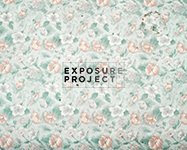"Some faces are windows, others are masks."


Mitchell has distilled the essence, or perhaps the problem, with a lot of contemporary portraiture. The "windows" and "masks" referred to poetically hint toward the emotional capacity of the photographic portrait. Sadly, a great deal of contemporary portraiture takes on the attributes of the "mask", where emotional connection is lost through rigid formality and a tendency toward the deadpan. This trend is rooted in mutual disconnection in which the portraits reveal nothing about the subject or the artist behind them. There are certainly wonderful exceptions to this trend, and photographer's who don't subscribe to these conventions- Nicholas Nixon, Andrea Modica, Alec Soth and Jen Davis are all photographers who come to mind. However, when emotional vitality is sacrificed for stylistic inclinations the results are often detached and anti-humanistic.
The juxtaposition between Nicholas Nixon's photograph Yazoo City, Mississippi and Richard Renaldi's photograph Craig, Laughlin, NV accentuates this notion of "windows" and "masks". Nixon's photograph subtly and powerfully establishes an immediate emotional impact. The father's expression and posture clearly insinuate an insecurity or despondence that is palpable in the photograph. The daughter's seeming comfort and assurance sets up a relationship in which the traditional roles of parent and child are reversed. She has become the parent who protects and nurtures her father; she makes eye contact with the camera while he doesn't.
Whether my reading of this photograph speaks to the reality of the situation photograph is inconsequential. Nixon's photograph feels honest and open-ended enough to allow deep connection and empathy with the subjects before his camera. Perhaps more succinctly, the distinction between portraits that are "windows" and those that are "masks" hinges on the potential for narrative; for some connection to the universality of human experience.
In contrast, Renaldi's portrait both physically and emotionally removes the viewer from the possibility of this connection. He is placed centrally and architecturally in the frame, photographically treated as an object rather than a human being. Additionally, the subject inhabits the self-aggrandizing, stereotypical identity of the American cowboy. Whether this is the influence of Renaldi or the subject, or a combination of the two, is hard to know. The result, however, is a photograph that "masks" the subject in a cloak of iconic, particularly American doctrine. Instead of connecting to him on an individual level, we are forced to see him as nothing more than a symbol or signifier of the rugged individualism associated with the American West. Ironically, this individuality is suppressed due to Renaldi's treatment of the subject and the over-saturated, often stereotypical volume of this kind of imagery.
From Top To Bottom:
Nicholas Nixon, Yazoo City, Mississippi
Richard Renaldi, Craig, Laughlin, NV
Images © The Artists



